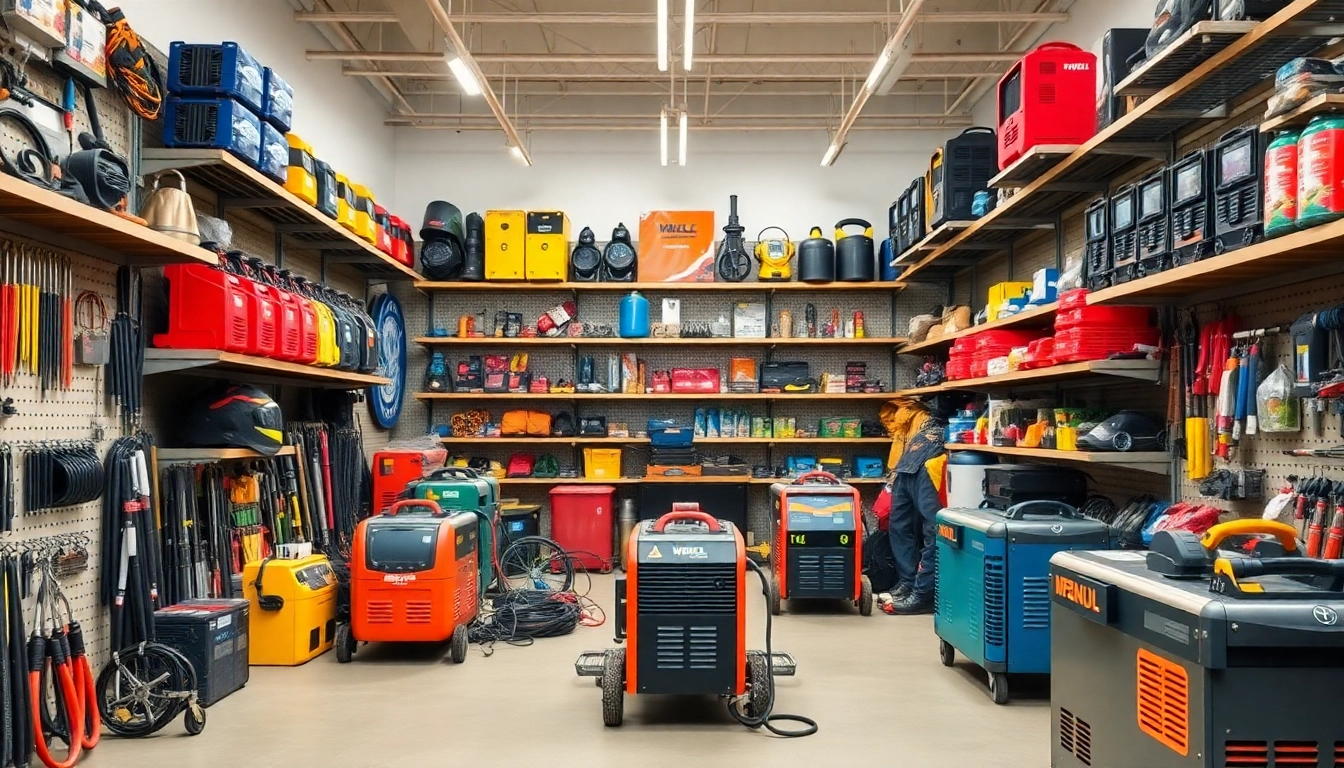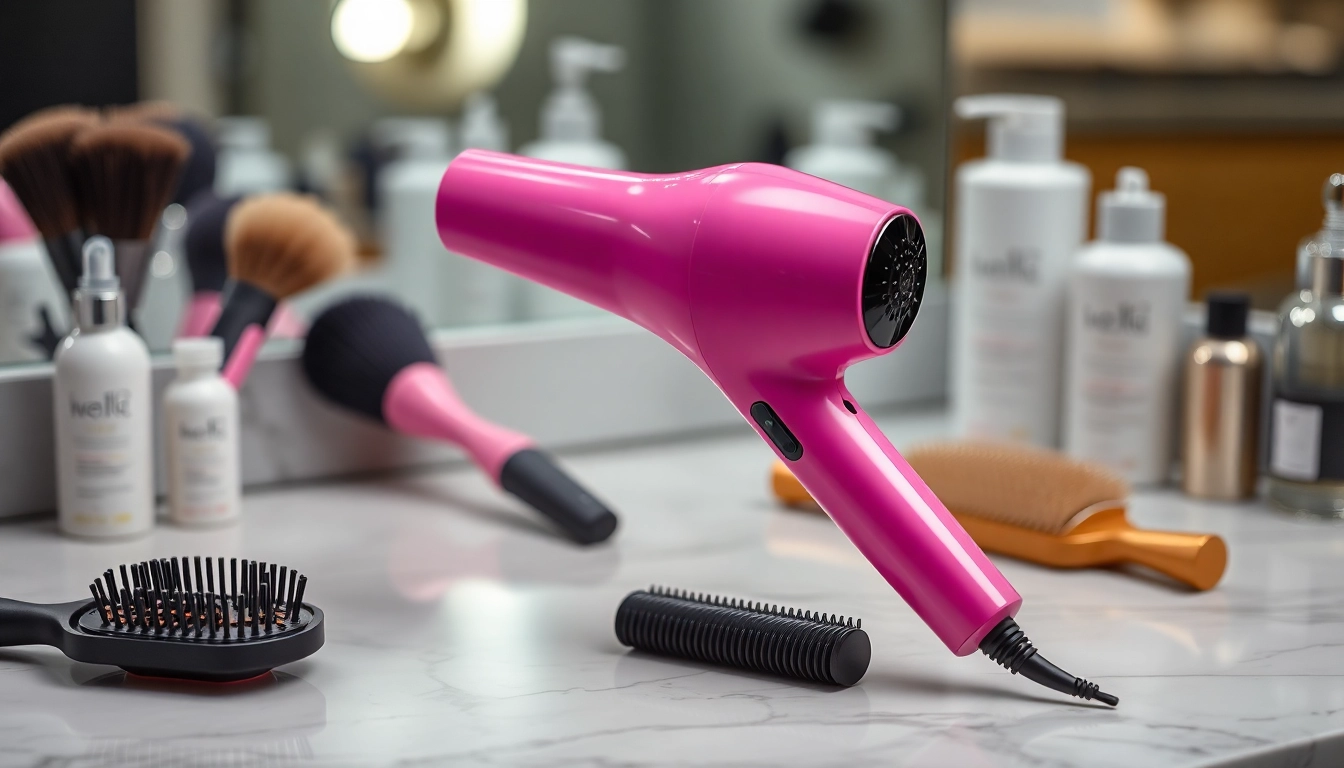Understanding the Types of Welding Supplies
When it comes to embarking on a welding project, having the right welding supplies is crucial. Welding supplies comprise a broad spectrum of tools, equipment, and materials designed to facilitate various welding processes. Whether you’re a seasoned welding professional or a novice, understanding the types of welding supplies available will help you make informed decisions that enhance your work quality and safety.
Essential Tools for Every Welder
Welding tools are indispensable for any welder, and they come in various forms, each serving a specific purpose. Here are some essential tools that every welder should have:
- Welding Machine: This is the heart of the welding process, responsible for providing the heat needed to fuse materials together. Options include MIG, TIG, Stick, and Multi-process welders.
- Welding Helmet: Protects the welder’s face and eyes from harmful UV light and sparks generated during welding.
- Welding Gloves: Essential for protecting hands from intense heat and sparks, gloves should be durable yet flexible for maximum dexterity.
- Chipping Hammer: This tool is used to remove slag from welds, ensuring a clean and strong joint.
- Wire Brush: Commonly used to clean the weld area before starting a new weld, helping to ensure a strong bond.
- Pliers: Useful for holding and manipulating metal pieces during the welding process.
Protective Gear Recommended for Safety
Welding can be dangerous if the proper safety measures are not taken. The right protective gear is vital for ensuring the safety of the welder. Here’s a list of protective gear recommended for every welder:
- Welding Jacket: Made from flame-resistant materials, these jackets provide coverage to the arms and torso against sparks and heat.
- Welding Boots: Steel-toed and flame-resistant boots protect the feet from heavy falling objects and sparks.
- Respirator: Depending on the materials being welded, a respirator may be necessary to avoid inhaling harmful fumes and gases.
- Face Shield: Offers an additional layer of protection against particles and radiation, complementing the welding helmet.
Consumables You Can’t Ignore
Consumables are less likely to be a primary focus for many welders, yet they are vital for successful welding operations. Common consumables you need include:
- Welding Wire: For MIG welding, the welding wire is fed into the welding machine to create the weld.
- TIG Rods: Used for TIG welding; these rods are essential for forming the weld pool.
- Electrodes: Essential for Stick welders, these come with a coating that helps with the arc stability and weld quality.
- Gas Cylinders: Used for shielding the weld from contamination during welding, especially in MIG and TIG welding.
Why Quality Matters in Welding Supplies
The quality of welding supplies can significantly impact the performance, safety, and overall results of your welding projects. Investing in high-quality supplies ensures better results and can save you money and time in the long run.
The Impact of Quality on Performance
Quality welding supplies contribute to better performance by:
- Ensuring Stronger Welds: Quality materials and consumables reduce the likelihood of defects in welds, leading to stronger bonds.
- Enhancing Equipment Lifespan: Higher quality tools and machines are often more durable, leading to a longer lifespan and reducing the frequency of replacements.
- Improving Safety: Quality safety gear and equipment significantly reduce the risk of injuries and accidents in the welding workflow.
How to Choose Reliable Brands
Selecting the right brands is essential when investing in welding supplies. Here are some tips for making informed choices:
- Research Brand Reputation: Look for brands well-known for their reliability and performance in the welding community.
- Read Reviews: Customer reviews and testimonials can reveal insights into the quality and durability of products.
- Consider Warranty and Support: Brands that offer extensive warranties and customer support are often more reliable.
Common Mistakes When Purchasing Welding Supplies
Even experienced welders can make mistakes when purchasing supplies. Here are some common pitfalls:
- Not Assessing Needs: Buying tools and supplies without evaluating the specific requirements of the project can lead to wasted money.
- Ignoring Compatibility: Ensuring that consumables, tools, and equipment are compatible with existing machines is vital for optimal performance.
- Focusing Solely on Price: While budget is important, prioritizing quality over cost can yield better long-term results.
Where to Buy Welding Supplies Online
With the convenience of online shopping, purchasing welding supplies has never been easier. However, knowing where to look is essential to finding the best deals and quality products.
Comparing Prices Across Platforms
Price comparison is crucial for ensuring you get the best value for your money. Use online tools or resources to compare prices across different suppliers. Note any additional costs like shipping and handling.
The Benefits of Shopping Online
Shopping online for welding supplies presents multiple advantages:
- Convenience: Shop from the comfort of your home at any time without the pressure of salespersons.
- Wider Selection: Access to a broader range of products and brands than may be available locally.
- User Reviews: Read customer reviews and ratings to help inform your purchasing decisions.
Top Websites for Welding Supplies
Several reputable websites offer a comprehensive selection of welding supplies. Here are some to consider:
- Cyberweld: Offers a variety of welding machines and accessories, including top brands like Miller and Lincoln Electric.
- Welding Supplies from IOC: Known for competitive pricing, they offer MIG, TIG, and Plasma welding equipment.
- WeldingOutfitter: An excellent choice for various welding tools and safety gear.
- Baker’s Gas & Welding: This site often features best sellers and essential gear for welding professionals.
Maintaining Your Welding Equipment
Proper maintenance of welding equipment ensures longevity and optimal performance. Regular maintenance checks can help avoid costly repairs and replacements.
Cleaning and Care for Longevity
Cleaning your welding equipment regularly helps maintain its performance. Here’s how:
- Remove Slag: After each use, remove slag promptly using a chipping hammer to prevent damage.
- Wipe Down Machines: Clean the exterior of welding machines to prevent dirt buildup.
- Inspect Cables: Check cables periodically for any signs of wear or damage and replace them as necessary.
Repairing Common Issues with Welding Tools
Even the best tools can face issues over time. Here are common problems and how to address them:
- Welding Machine Not Starting: Check power connections and ensure all switches are engaged.
- Poor Weld Quality: Inspect settings on your welding machine, as improper settings can lead to inconsistent welds.
- Cable Damage: For frayed cables, consider using electrical tape for a temporary fix while ordering replacements.
When to Replace Old Equipment
Knowing when to replace tools can significantly affect welding quality. Watch out for the following:
- Frequent Failures: If equipment regularly malfunctions, it may be more cost-effective to replace it rather than repair.
- Decreased Performance: If your welds consistently lack quality despite adjustments, it might be time for new equipment.
- Updated Technology: Newer models often come with advanced technology and safety features that can enhance your welding experience.
Advanced Techniques and Innovations in Welding Supplies
The welding industry constantly evolves with new technologies that improve efficiency, safety, and quality. Staying updated with these innovations can give welders a competitive edge.
New Technologies Making an Impact
Some of the latest technologies making waves in welding include:
- Robotic Welding: Automation in welding is increasing production quality and speed.
- 3D Printing: This technology is changing how materials are used and welded, allowing for more intricate designs and structures.
- IoT Integration: Internet of Things (IoT) devices now offer real-time monitoring of welding conditions, helping ensure optimal performance and safety.
Upcoming Trends in the Welding Industry
The welding industry is also witnessing several emergent trends:
- Sustainable Practices: There is an increasing focus on eco-friendly materials and processes.
- Advanced Training Programs: New educational initiatives and technologies are making it easier to train and upskill welders.
- Portable Equipment: As jobs become mobile, demand for lightweight and portable welding equipment is rising.
The Future of Welding Supplies: What to Expect
As technology advances, the future of welding supplies promises exciting developments. Expect increased automation, enhanced safety features, and continuous improvements in material science that will allow for stronger and more efficient welds.



